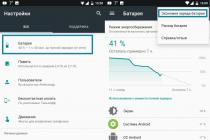Automatic bipolar switch for protection electrical network structurally includes 2 single-pole circuit breakers with a common switching lever and an internal locking system. In this article, we will talk in detail about what is bipolar machine, what are the features of its operation and installation, and also let's figure out what is the main difference between two-pole and single-pole protective devices.
Features of the operation of a single-pole and two-pole AB
The essence of the work of each of these types, in general, can be understood from the name. A single-pole machine is designed to turn off one line. A two-terminal differs from it in that it controls the workflow simultaneously in two lines and compares the parameters of the electron flow, determining whether it corresponds to the value that is acceptable for the correct operation of the network. If these indicators are exceeded, the device works, turning off the power of both lines at the same time.
Some readers may have a question: is it possible to replace a two-pole machine with a pair of single-pole switches? Under no circumstances should this be done. Indeed, in a device with two poles, its elements are connected not only by a common lever, but also by a locking mechanism.

This means that in the event of a malfunction, they will turn off at the same time, and in a pair of single-pole ABs independent of each other, only one machine will work. Electric current in this case will still be supplied to the faulty circuit through the switched on device, which can cause a fire in the wiring. Clearly about the attempts to merge in the following video:
The difference between these two types safety switch lies in the release device. A two-pole circuit breaker must have a tripping element, the configuration of which allows both parts of the device to be switched off simultaneously, both with automatic operation and with manual action.
If the electrical circuit in the apartment is single-circuit, then there is no need to install a two-pole machine in it, since there is no need to simultaneously protect various segments of the room. But in the case when complex equipment is installed in one of the rooms, which, according to its parameters, cannot be included in one common circuit, one cannot do without a multipole.
For clarity, consider an example. Let's say in home network there are two lines, one of which includes a complex device, and it is powered through a rectifier.

If a violation occurs in one of the lines, then as a result of its shutdown, the power supply to one circuit will cause a voltage surge, and hence an increase in other parameters. If the AV of the second line does not work in a timely manner, the result will be a failure of the device, and possibly a cable fire. That is why such a network must be protected by a 2-pole device.
What will happen in the reverse situation, when they try to disconnect a multi-pole machine, in the video:
Capabilities and purpose of multi-pole devices
The installation of a two-pole AB allows you to control:
- Two circuits independent of each other with their simultaneous shutdown in the event of a malfunction.
- The parameters of each of the independent lines (although if problems arise in one of them, both are de-energized at the same time).
- DC line having similar shutdown parameters.
Based on this, the introductory machine must be at least two-pole, since it will allow you to turn off the power throughout the house if, for any reason, the AV of the faulty section of the network did not work. Like any bag, it also allows you to de-energize the apartment manually.

Let's consider such a situation. A short circuit occurred in one of the home electrical wiring lines, to which the AV of the problem area did not have time to respond and burned out, turning from a switch into an electric current conductor. Even if the general network is protected by a residual current device, this in most cases will not solve the problem, since the RCD turns off the power in the event of a cable breakdown in order to prevent electric shock to people. Therefore, it will also fail, and an imbalance will occur in the circuit protected by the introductory two-pole machine.
Clearly about multi-pole machines in the video:
If the voltage difference at the input and output is exceeded by more than 30% (and if there is a short circuit in one of the branches, this will happen very quickly), the input automat will work, disconnecting both the phase and neutral cables. In this case, the electrical network will be completely de-energized, and there will be no leakage of current even to the ground cable. Thus, the risk of equipment failure and line fire will be eliminated. Having eliminated the malfunction, it will be possible to manually turn on the machine again.
Cons of bipolar circuit breakers
Any device has weak sides, and multi-pole network protection devices are no exception. Although two-terminal networks have few negative properties, we still list them:
- With the simultaneous closure of two lines, an electric breakdown of the cable occurs.

- The thermal release occasionally fails, as a result of which the mains power is turned off, even when it is in a normal state.
- As a result of an accident, the AB may break down on one of the lines, due to which it will be impossible to turn on the power even after troubleshooting.
- Multi-pole devices have more high sensitivity to mechanical damage in comparison with single circuit breakers.
Despite these shortcomings, protective devices that provide control over two lines are common and very popular. They are what keep you safe common network in case of problems in the line to which powerful household appliances are connected.
Safety measures when installing two-pole machines
The electrical safety rules for the installation of protective devices for two poles do not generally differ from the general measures for the installation of other electrical devices. They are:
- Installation must be carried out by two people, so that in the event of an electric shock of one of the masters, the second one can provide assistance to the victim in a timely manner.

- To protect against electric shock, dielectric mats and protective gloves must be used.
- Before starting any work on the electrical network, you must obtain a special permit.
Conclusion
In this article, we talked about bipolar circuit breakers, their features and advantages, as well as a few disadvantages inherent in them. Summing up, it should be noted that multi-pole circuit breakers provide reliable protection for electrical networks with two circuits, especially when devices that differ significantly in power are connected to them.
Automatic protection systems electrical circuits, which replaced fuses, are widely used not only in branched networks of industrial enterprises, but also in household electrical wiring. The machines are compact, reliable and easy to operate. You can protect the electrical wiring of your home network using single-pole machines. But there are cases when, for full protection, electrical installations it is necessary to install a two-pole circuit breaker. Sometimes a complex electrical network can be protected solely with the help of group machines.
A feature of multi-pole automata is that they disconnect several lines at the same time. This property is very useful in three-phase circuits, since the disconnection of only one phase wire can lead to the destruction of electric motors and other equipment. Similar problems in a two-wire circuit are solved with the help of two-terminal networks.
Device and principle of operation
The design of the two-pole is identical to the circuit breaker with one pole. In other words, this device consists of two single-pole automata combined in one housing. Its peculiarity is that in these protective devices in emergency situations, both protected lines are automatically disconnected simultaneously. In principle, you can make an elementary two-pole machine yourself by connecting the control levers of two single-pole devices tightly with a bar.
Attention! It is not possible to replace a two-pole circuit breaker with two single switches operating separately! You should also not use single switches connected by a jumper as a two-pole machine. There is also a locking mechanism in the design of the two-terminal network, which is not in the "improved" device from.
To understand the device and the principle of operation of a two-pole circuit breaker, it is enough to understand the structure of a machine with one pole. The simplest such device consists of a bimetallic plate and the design of the cocking and disengaging mechanism. By the way, outdated machines looked exactly like that. The device of such a switch is shown in Figure 1.
In situations equivalent to a short circuit or during prolonged overloads in single-phase circuits, the bimetallic plate heats up and, due to deformation, acts on the working lever of the structure. The protective shutdown mechanism is activated and the circuit is broken.
Figure 1. Old style circuit breaker
The principle of operation of this device is very simple. When the rated currents exceed valid parameters, the thermal release actuates the moving contact and the circuit is broken. The power off mechanism can work in two cases - during an overload or due to a short circuit. To connect the power, it is necessary to eliminate the cause of the operation currents, and then turn on the machine by pressing the control lever.
The scheme of work is simple and reliable. However, it has a significant drawback: the machine does not respond to leakage currents, therefore it cannot protect against electric shock or prevent the wiring from catching fire in the event of a spark. Additional devices are required for complete protection.
The mentioned disadvantage is deprived of modern bipolar bags. Figure 2 shows the design of such a circuit breaker. There is one important detail in its design - an electromagnetic release. Such two-pole devices combine the functions of conventional and residual current devices (RCDs).
 Figure 2. The device of a modern machine
Figure 2. The device of a modern machine Thanks to the electromagnetic release, the mechanism for charging and disengaging a two-pole machine reacts to leakage currents. This is the same blocking device that was discussed above.
The principle of operation of the electromagnetic release.
By two-wire line current flows in two opposite directions - along the phase conductor in one direction, and along the zero conductor in the other. At rated voltage, the magnetic fluxes in the solenoid coils, induced by equal counter currents, are compensated. Therefore, the resulting magnetic flux is zero.
But as soon as a leak appears, the balance is disturbed, and the resulting magnetic flux will draw the rod into the solenoid. He, in turn, will actuate the levers of the cocking and disengaging mechanism. A two-pole machine will open 2 poles, regardless of which of the conductors has a leak or short circuit. The RCD will trip as a reaction to a change in the parameters of differential currents.
Purpose
In the case of a single circuit electrical circuit, often used in the electrification of houses, it is not advisable to use two-pole circuit breakers to protect the network. This problem is successfully solved by single-pole circuit breakers, since there is no particular need to simultaneously turn off various segments of the circuit. In single-phase wiring with a grounded neutral, when all neutral conductors are shorted to neutral buses, single switches can also be dispensed with.
A completely different situation arises in cases where some equipment cannot be connected to one common circuit. For example, if for group nutrition electrical appliances a transformer is used, then you can’t do without a two-pole machine. The explanation is simple - there is no phase and zero at the output of the transformer. Cutting off the electric current on one of the wires does not exclude the presence of voltage on the other. Only the simultaneous disconnection of two poles ensures the safety of the equipment.
The installation of a two-terminal network allows you to combine the tasks of differential protection and RCD in one device. In this case, it is no longer necessary to install separate digital residual current devices.
Four-pole automata operating in three-phase networks using neutral wires work on a similar principle. protection of three-phase loads from short circuit is carried out.
By the way, the PUE does not prohibit the use of bipolar switches as introductory automata. They can also be used to protect group and individual loads. But, in no case should ground wires be connected through this device. Remember that breaking the PE wire is only allowed when removing the plug from the socket.
Advantages and disadvantages
Two-pole circuit breakers provide control of lines with single-phase power, as well as protection of equipment operating in three-phase circuits.
The advantages of these devices include:
- reliable protection of houses, offices and industrial premises from network surges;
- the ability to control the power of individual electrical appliances and installations;
- ease of installation and maintenance. Two-pole AB are ideal for branching and structuring wiring in the power supply of premises.
Of course, the main advantage is that a two-pole machine simultaneously de-energizes two conductors, regardless of which of them had an accident. This guarantees the complete absence of voltage in the protective conductors.
Among the shortcomings can be noted:
- the existence of a cable breakdown probability when two loaded lines are switched on simultaneously;
- in rare cases, when the thermal release fails, it is possible to randomly turn off the power even in the rated voltage mode;
- the need to select bipolar automata in accordance with the design parameters of the network. If the sensitivity of the switch is too high, it will often work without good reason, and if the response rate to an unusual situation is too low, the machine will not notice network overload.
Thanks to unique advantages the use of two-pole switches is justified even taking into account the existing probabilities of the manifestation of these shortcomings.
Installation and wiring diagrams
Mounting devices on a din rail is very simple. For this, special grips (latches) are provided on the back of the machine (Fig. 3). Connecting the wires to the terminal of the device is also not difficult: the wires are easily clamped with bolts on the terminals of the device. By default, input wires are connected to the upper terminals, and output wires to the lower terminals.
 Picture 3. Fastening of machines
Picture 3. Fastening of machines The generally accepted connection scheme is as follows:
- An input switch AB is installed in front of the counter.
- After the meter with a single-phase input, a two-pole AB is mounted.
- If a three-phase input is provided, then a three-pole or four-pole circuit breaker is used, depending on the connection scheme of the neutral conductors.
In complex branched circuits, there can be several two-pole circuits, after which, one more single-pole automaton is installed on each branch. An example of such a circuit with a common zero bus is shown in Figure 4. Please note that a two-pole automaton was used for phase input. There are no other input devices in this diagram.
 Rice. 4. Example of a switching circuit circuit breakers
Rice. 4. Example of a switching circuit circuit breakers
How to choose a bipolar?
In order for the circuit breaker to fully provide the necessary protection, it is necessary to carefully consider its choice. The main thing is not to make a mistake with. To do this, you need to know the rated load that you plan to connect to the device.
The current in the circuit protected by the machine is calculated by the formula: I = p/u, where is the network voltage.
For example: if a 400 W refrigerator, a 1500 W electric kettle and two 100 W light bulbs are connected to the appliance, then P = 400 W + 1500 W + 2 × 100 = 2100 W. At a voltage of 220 V, the maximum current in the circuit will be: I\u003d 2100/220 \u003d 9.55 A. The closest machine rating to this current is 10 A. But in the calculations, we have not yet taken into account the resistance of the wiring, which depends on the type of wires and their cross section. Therefore, we buy a switch with a trip current of 16 amperes.
Here is a table that helps determine the power of the network to be taken into account when calculating the current strength.
| Current strength | 1 | 2 | 3 | 4 | 5 | 6 | 8 | 10 | 16 | 20 | 25 | 32 | 40 | 50 | 63 | 80 | 100 | |
| Power of a single-phase network | 02 | 04 | 07 | 09 | 1,1 | 1,3 | 1,7 | 2,2 | 3,5 | 4,4 | 5,5 | 7 | 8,8 | 11 | 13,9 | 17,6 | 22 | |
| Wire cross-sections | copper | 1 | 1 | 1 | 1 | 1 | 1 | 1,5 | 1,5 | 1,5 | 2,5 | 4 | 6 | 10 | 10 | 16 | 25 | 35 |
| aluminum | 2,5 | 2,5 | 2,5 | 2,5 | 2,5 | 2,5 | 2,5 | 2,5 | 2,5 | 4 | 6 | 10 | 16 | 16 | 25 | 35 | 50 | |
Using the table, you can calculate with great accuracy the necessary parameters of a two-pole machine.
As for the stores where you can buy them, be guided by prices and the range of products. From the list of manufacturers we can recommend, for example, the Legrand brand.
Related videos
Greetings, dear readers of the site.
In continuation of a series of publications on circuit breakers, the next article in the cycle - circuit breaker connection diagram.
Let me remind you that a series of articles is included in the course.
We have already studied in detail the design and main specifications machines, let's look at their connection schemes.
Depending on the number of switched poles (or otherwise modules), the machines are divided into one-, two-, three-, four-pole (three phases and zero). In the event of an emergency, all poles of the circuit breaker are switched off at the same time.
One pole is a part of the machine, which includes two screw terminals for connecting wires (on the supply side and on the load side). The width of a single-pole circuit breaker mounted on a DIN rail is standard - 17.5 mm, multi-pole circuit breakers are a multiple of this width.
One- and two-pole are used in a single-phase electrical network. Most often, single-pole automata are used, they are installed in a break in the phase wire and, in the event of an emergency, disconnect the supply phase from the load.
Bipolar automata allow you to simultaneously turn off both zero and phase. They are most often used as introductory machines, or if it is necessary to completely disconnect the consumer from the electrical network, for example, a boiler, a shower cabin. They disconnect zero and phase from the protected section of the circuit and allow repair, maintenance or replacement of circuit breakers.
You cannot install two single-pole circuit breakers separately to protect the phase and neutral wires. For these purposes, bipolar automata are used, which turn off zero and phase at the same time.
Three- and four-pole are used in a three-phase electrical network. Three-pole circuit breakers are installed in phase break (L1,L2,L3) three-phase network and serve to connect a three-phase load to it (electric motors, three-phase electric stoves, etc.). In the event of an emergency, they disconnect simultaneously all three phases from the load.
Four-pole machines allow you to simultaneously turn off both zero and all three phases, and are used as introductory machines in a three-phase electrical network.
Allows you to turn off all the electrical wiring of the apartment and disconnect the supply line from the group electrical circuits of the apartment.
Depending on the grounding system, the following input machines are used:
The introductory machine for the TN-S system (where the zero working N and zero protective PE conductors are separated) must be:
- single-pole with zero or two-pole;
- three-pole with neutral or four-pole.
The TN-S system is used in modern homes.
This is necessary to simultaneously disconnect the apartment's power supply from the zero working and phase conductors from the side of the power supply input, since the neutral and protective conductors are separated throughout.
For the TN-C system (where the zero working and zero protective conductors are combined into one PEN conductor), the introductory circuit breaker is installed single-pole (with 220 V power supply) or three-pole (with 380 V power supply). They are installed in the gap of the phase working conductors.
The TN-C system is used in Soviet-built houses (the so-called "two-wire").
According to the rules for the installation of electrical installations (clause 1.7.145), it is not allowed to turn on switching devices in the circuits of PE- and PEN-conductors, with the exception of cases of power supply to electrical receivers using plug connectors.
This PUE requirement due to the fact that a situation is possible when two-pole circuit breakers cannot simultaneously disconnect the phase and PEN conductors. And by disconnecting the PEN conductor, we thereby initiate its breakage.
When switched on under load, sticking or phase contacts may occur inside the machine (for example, a grain of sand may get on the contact group of the machine), in this case, when the machine is disconnected from the mains, the PEN conductor will break and a dangerous potential will be carried out to zeroed electrical equipment cases. Those. there is no guarantee that the switching devices will simultaneously disconnect both the phase and PEN conductors.
Connection of wires to circuit breakers is carried out according to the scheme: "supply from above", and "load from below". Those. the wire with the supply voltage is connected to the upper screw terminal, and the outgoing load wire to the lower screw terminal.
See detailed video Connection diagrams for circuit breakers
We examined the design, main characteristics, connection diagrams of circuit breakers and came close to the issue of their choice.
Subscribe to the news, the most interesting is ahead!
The most common means of protecting the line and electrical appliances are circuit breakers. When installing them, you must follow the basic rules.
- Input at the top of the machine, output at the bottom.
- The enable flag should be directed upwards when the machine is turned on.
- There should be no exposed wires.
How to connect a differential machine
The differential machine combines protection of the line from overloads and short circuits, as well as automatic switches, and protection of a person from electric shock as an RCD.
The case version does not differ from automata or RCDs, which makes it possible to install a differential automaton in standard boxes using a DIN rail.
Connecting a differential machine also resembles connecting a circuit breaker, with a small exception - two rules must be observed.
- It is necessary to observe the phasing of the connected wires. On the case of the differential machine, the designations of the zero and phase input are applied, which must be taken into account during installation.
- The neutral wire connected at the output of the differential machine is used only with the line that the device protects.
Differential automata are very reliable and unpretentious, but deviation from these rules does not guarantee correct work devices.
For a single-phase network, the use of two-pole machines is preferable to single-pole ones. The reason is simple - when voltage appears on the neutral wire, with one movement of the flag, the circuit is completely broken, saving both the line and the electrical appliances connected to it. The housing version of the two-pole switch allows mounting on a standard DIN rail.
In this case, it should be borne in mind that the width of such an automaton is larger, as a rule, twice as much as a single-pole automaton. The upper contact pair is designed to connect the phase and neutral wires.

There are no strict rules for the location of the phase and neutral wires, but in the case of connecting a number of two-pole machines, it is necessary to follow the same tactics.
Having chosen, for example, the left contact for the phase wire, all other machines must be connected as well. The left contact is phase, the right contact is zero.
The stripped wires are fixed in the contacts using screw clamps. In this case, there should be no bare sections of the wire. Do not forget that from the phase to the neutral wire is very short distance and there is a possibility of a short circuit in the absence of insulation.
The most commonly used single-pole circuit breakers are reliable, easy to install and provide the necessary line protection against overloads and short circuits.

When connecting the circuit breaker, it is important that the body of the machine is securely fastened and, when turned on - turned off, does not fall off the attachment point.
To do this, use a mounting DIN rail or special boxes with pre-installed rails in the housing. The machine is mounted on a rail using a spring-loaded latch at the bottom of the case.
After installing the machine, a wire is connected to it. The top terminal of the machine is responsible for the input voltage, and the lower terminal is for the output. The wires laid and fixed on the wall are brought to the machine and cleaned.
In this case, be sure to observe the condition of the integrity of the insulation everywhere, except for the terminal blocks. The length of the stripped ends is quite enough at 1-1.5 cm.
The phase incoming and outgoing wire is clamped in the terminals of the machine, while the zero one can pass through the box or, if necessary, is fixed on the neutral rail.
Incoming and outgoing wires must be laid in such a way as to avoid excess length. The wires are laid parallel to each other and, if possible, all bends are made at right angles.
After installing the machine and checking all connections, the first switch-on must be carried out without a connected load on the line.
Connecting circuit breakers
Connections of machines in a single-phase network
The installation option for circuit breakers depends on the selected one or three-phase network.
For a single-phase network, one or two-pole machines are used; for a three-phase network, three or four-pole machines are used. Multi-pole machines are assembled from several single-pole ones.
The protection mechanism is connected into one system through special connections. For example, when the network of one pole of the machine is turned off during overload or short circuit. the entire multi-pole machine will turn off. A phase is connected to a single-pole machine; in case of an accident, the machine turns off the phase.
This option for connecting the machine is suitable for the network of the TN-C system, where the neutral wire is connected separately, through the zero bus. If the house uses the TN-S system, then the input is carried out with three wires, phase, zero - a blue wire and a yellow-green wire PEN protective earth.

Connection of single-pole circuit breakers in a TN-S network system with neutral and protective earth
In this situation, the installation of circuit breakers is carried out on two-pole machines, where the phase with the neutral is connected to the upper terminals of the introductory machine, and the protective yellow-green wire PEN is connected to the ground bus in the electrical panel.

Use of two-pole circuit breakers in a TN-S network system with neutral and protective earth
Connection of machines in a three-phase network
In a three-phase network, three or four-pole machines are used. In the TN-C system, all three phases L1, L2, L3 are connected to the upper terminals of the three-pole machine, and the neutral wire to the neutral bus of the electrical panel.

Connection of a three-pole circuit breaker in a TN-S network system with neutral and protective earth
In the TN-S system with PEN protective earth, three phases are connected to the upper terminals of the four-pole machine, and the blue neutral wire to the upper terminal of the fourth pole of the introductory machine marked N. The yellow-green protective PEN wire is connected to the electrical panel ground bus.
Connecting wires to the machine
The installation of the circuit breaker is carried out on a DIN rail, the length of which is selected with the calculation of 17.5 millimeters per single-pole machine. When installing the cable, the outer insulation is removed from it by 10 - 15 cm to improve the flexibility of the wires and ease of installation.
The ends of the wires are protected by 7-10 mm and lead under the terminal contacts. It is not necessary to tighten strongly the screw connections of the machine in order to avoid distortion of its mechanisms. When installing wires into the terminals of the machine, make sure that wire insulation does not get under the contacts. At best, there will be an unreliable connection, and at worst, the phase on the contact will disappear.

Mounting connection rail for automatic machines
For multi-core cable, for reliable contact, it is better to put copper lugs of the appropriate size. In the electrical panel, where several machines are installed in a row, it is convenient to install a copper connecting bus for circuit breakers (comb). It is cut to the required length, and installed in the desired sequence instead of wire jumpers.















